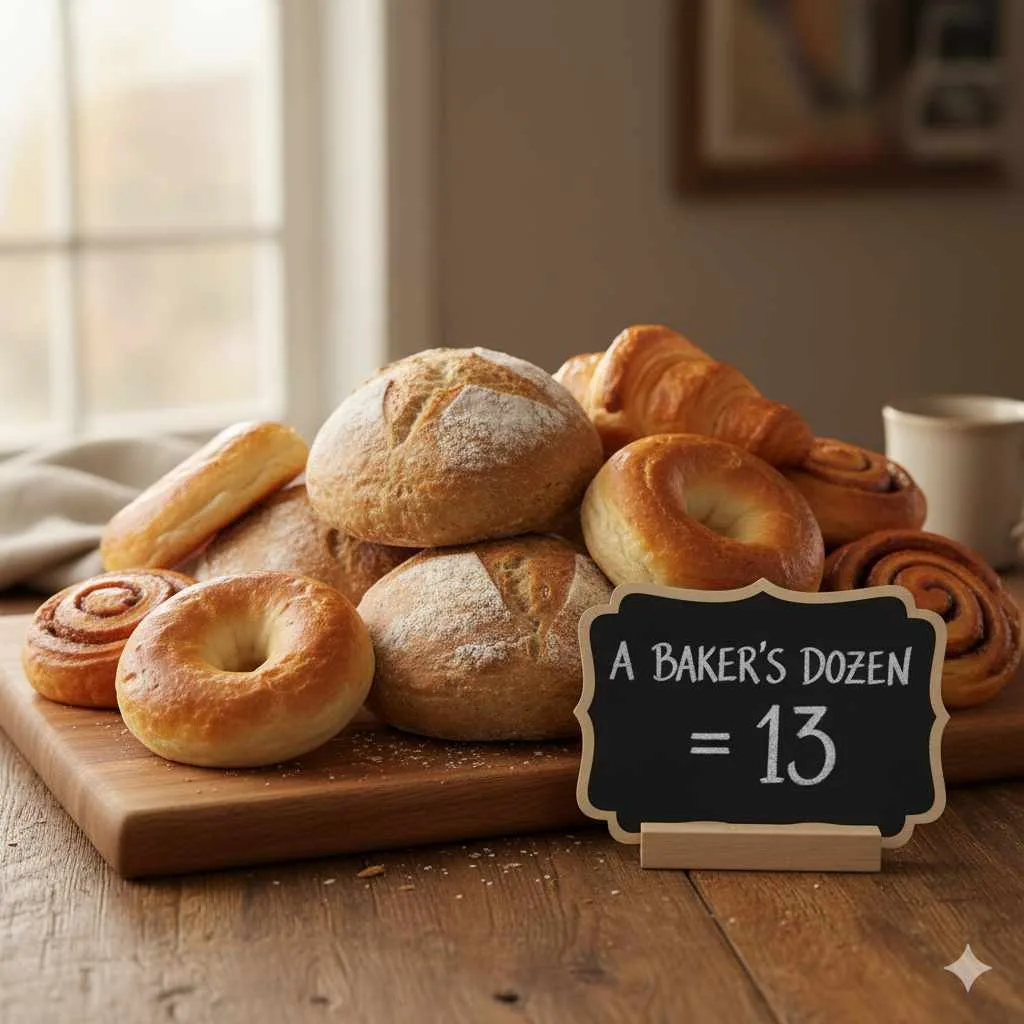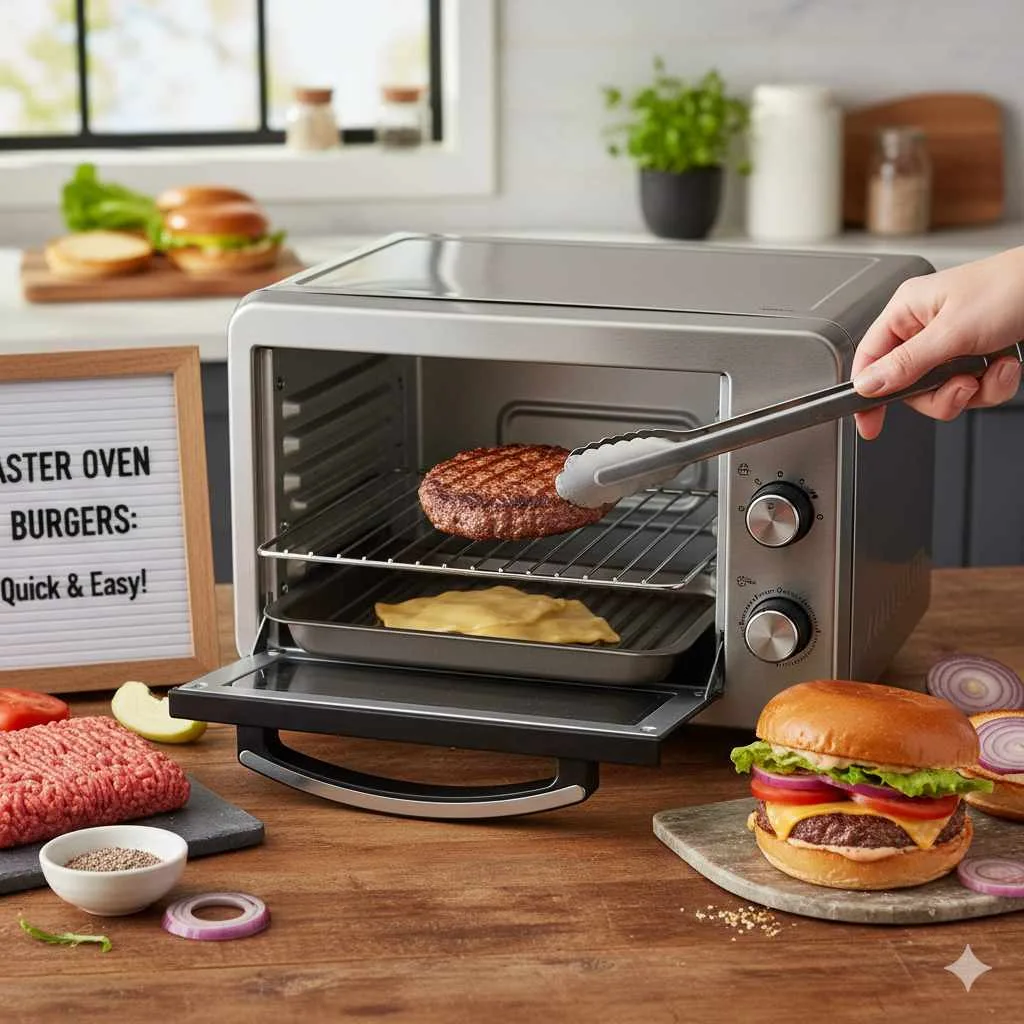A baker’s dozen is traditionally 13 items, not 12. This historical practice ensured bakers met customer expectations and avoided penalties for shorting their customers, making it a generous measure of baked goods.
Ever found yourself wondering about that extra little something when buying a dozen cookies or doughnuts? You’re not alone! The phrase “baker’s dozen” pops up now and then, often leaving us scratching our heads. It might seem like a small detail, but understanding it can add a touch of culinary history and a little extra joy to your next sweet treat. Don’t worry if you’ve never quite grasped it; we’re here to clear up this delicious mystery. Get ready to discover the simple answer and the charming story behind it, so you’ll always know what to expect!
The Sweet Secret: Unpacking “A Baker’s Dozen”
So, how much is a baker’s dozen? The answer is delightfully simple: it’s thirteen (13) items. While a standard dozen is consistently 12, a baker’s dozen goes the extra mile, offering one freebie for good measure. This tradition is steeped in history, particularly in the world of baking, and it’s a practice that reflects generosity and a commitment to quality.
Think of it as a friendly wink from the baker, a little present to ensure you’re happy with your purchase. In a world where precise measurements are crucial, especially in baking, this intentional addition of an extra item tells a story of trust and customer care. It’s a charming remnant of a time when bakers wanted to be absolutely certain they provided value.

Why Thirteen? The Historical Roots of the Baker’s Dozen
The tradition of the baker’s dozen, or 13 items instead of 12, has a long and fascinating history. It’s not just a random number; it’s rooted in ancient laws and the practical realities faced by bakers centuries ago.
Ancient Laws and Strict Measures
In medieval England, bread was a staple food, and its weight and quality were heavily regulated by law. Bakers had to adhere to strict standards to ensure their loaves were of the correct size and weight. Accusations of shorting customers on weight or quantity were taken very seriously. Penalties for bakers who were found to be selling underweight bread could be severe, ranging from hefty fines to public punishment.
To avoid any possibility of accidentally falling short – perhaps due to variations in dough, oven shrinkage, or simply miscounting under pressure – bakers developed a clever and safe practice. By adding an extra item to every dozen they sold, they created a buffer. This ensured that even if one item was slightly smaller or lighter than intended, the customer would still receive the equivalent of at least twelve full items. It was a proactive measure to guarantee they met the legal weight requirements and maintained a good reputation.
The “Larbor Penaltie” and Customer Trust
This practice became so ingrained that it was sometimes referred to as “devils dozen” or the “Larbor Penaltie” (labor penalty). The ‘labor penalty’ wasn’t about earning less, but about avoiding the penalty for giving less than you promised. Adding the 13th item protected the baker from accusations of deceit and ensured that customers felt they were getting their money’s worth, fostering trust and loyalty.
This tradition wasn’t just about avoiding punishment; it was also about building a reputation for generosity and reliability. A baker who consistently gave an extra item was likely to be favored by customers over one who only provided the bare minimum. In a competitive marketplace, this was a smart business strategy.
Evolution of the Tradition
Over time, as regulations became less draconian and perhaps as bakers became more confident in their accurate measurement and baking skills, the practice of the baker’s dozen naturally evolved. While the legal mandate faded, the tradition of offering 13 when 12 were ordered persisted as a sign of a generous spirit and a nod to culinary heritage. It’s a practice that continues in many establishments today, much to the delight of customers who receive that little bit extra.
When You Might Encounter a Baker’s Dozen
While the term “baker’s dozen” might sound old-fashioned, you can still find this generous tradition alive and well in various places. It’s most commonly associated with baked goods, but the spirit of giving a little extra can extend beyond the bakery.
Common Places You’ll Find a Baker’s Dozen:
- Bakeries and Donut Shops: This is the classic scenario. Order a dozen doughnuts, and often you’ll walk away with 13. The same applies to bagels, cookies, pastries, or rolls.
- Farmers Markets: Many vendors at farmers’ markets, particularly those selling baked goods or fresh produce, might offer a baker’s dozen as a sign of appreciation for their local customers.
- Specialty Food Stores: Some artisanal food shops that bake their own breads, cookies, or other treats might continue this tradition.
- Home Baking and Sharing: While not a commercial transaction, home bakers might sometimes bake an extra item when making a batch for friends or family, carrying on the spirit of generosity.
- Figurative Use: Sometimes, “baker’s dozen” is used more metaphorically to refer to anything that includes an extra item or quantity beyond the expected amount.
It’s always a good idea to clarify if you’re unsure. A quick question like, “Do you offer a baker’s dozen?” can confirm whether you’ll be getting 12 or 13. But often, especially with doughnuts, the extra one is just a happy surprise!
How to Calculate Fair “Dozens”
While the concept of a baker’s dozen is sweet and simple (13), understanding how to calculate quantities when you’re buying or selling can be helpful. For commercial purposes, and even for planning at home, knowing your numbers is key.
Standard Calculation:
A standard dozen is always 12. So, to calculate the total number of items in multiple dozens, you multiply the number of dozens by 12. For example:
- 2 dozen = 2 x 12 = 24 items
- 5 dozen = 5 x 12 = 60 items
Baker’s Dozen Calculation:
A baker’s dozen adds one extra item to each standard dozen. So, when dealing with baker’s dozens commercially, it usually implies that for every set of 12 items ordered/sold, 13 are provided. This is a crucial distinction.
Let’s look at how this plays out:
| Quantity Ordered/Sold (Standard Dozens) | Standard Dozen Count | Baker’s Dozen Count (Items Provided) | Extra Items Provided |
|---|---|---|---|
| 1 | 12 | 13 | 1 |
| 3 | 36 | 39 | 3 |
| 6 | 72 | 78 | 6 |
| 10 | 120 | 130 | 10 |
Note: In most current commercial settings, when someone says “buy a dozen, get one free,” they mean you pay for 12 and receive 13. The vendor calculates their cost based on the 13 items. If you were ordering in bulk and a supplier offered a “baker’s dozen” on a large order, they would likely add one extra for every dozen units you purchased.
Calculating for Home Use:
If you’re baking at home and want to make, say, 2 baker’s dozens of cookies:
- You’d aim for 2 x 13 = 26 cookies.
- If your recipe makes exactly 12 cookies per batch, you might make 2 full batches and then an extra 2 cookies, or simply make 3 batches to ensure you have enough for the generous count.
Understanding these simple calculations helps manage inventory, pricing, and customer expectations. It’s a straightforward shift from multiplying by 12 to multiplying by 13 for each “dozen” group.
The “Dozen” in Other Contexts: Beyond Baking
The concept of a “dozen” as a unit of ten or more has a rich history that extends beyond the bakery. While “baker’s dozen” specifically means 13, the idea of grouping in twelves (and sometimes more) is seen in various historical measurements and traditions.
A Brief History of “Dozen”:
The number 12 has been significant for centuries, likely due to its divisibility. The number 12 can be easily divided by 2, 3, 4, and 6, making it practical for trade and measurement. Here are a few ways “dozen” and related concepts have appeared:
- Gross: A “gross” is 12 dozen, or 144 items. This larger unit was often used for wholesale transactions.
- Long Hundred: In some historical contexts, especially in the textile trade, a “long hundred” meant 120 items (10 dozen) instead of the standard 100. This is similar to the baker’s dozen concept of adding extra for good measure.
- Measurement Systems: The duodecimal system (base-12) has been used in various cultures. Although we primarily use the decimal system (base-10) today, remnants can be found in things like the 12 inches in a foot, 12 months in a year, and 24 hours in a day (which is 2 x 12).
Modern-Day Significance:
Today, the standard dozen of 12 is what’s most commonly recognized in commerce. When you buy a dozen eggs, a dozen roses, or a dozen donuts, you almost always expect 12 items. The baker’s dozen remains a charming exception, a special nod to a historical practice.
It’s interesting to consider how these units of counting developed and why certain numbers became standard. The practicality of 12 likely played a huge role, and the baker’s dozen is a perfect example of adapting that practical number with an added touch of generosity and historical prudence.
When to Use “Baker’s Dozen” vs. “Dozen”: A Simple Guide
Navigating the use of “dozen” versus “baker’s dozen” is quite straightforward once you understand the core difference: 12 vs. 13. Here’s a quick guide to help you use the terms correctly and confidently.
Use “Dozen” When:
- You mean exactly 12 items.
- You are referring to general quantities, measurements, or any situation where the standard count of 12 is implied.
- Examples abound in everyday life: a dozen eggs, a dozen arguments, a dozen reasons, a dozen roses.
Use “Baker’s Dozen” When:
- You mean 13 items.
- You are specifically referring to the tradition of getting one extra item beyond the standard dozen, most commonly in the context of baked goods or in situations where a generous count is implied.
- You want to evoke a sense of tradition, generosity, or a nod to historical practices.
- Example: “I bought a dozen donuts, but they gave me a baker’s dozen, so I got 13!”
Important Considerations:
- Clarity is Key: In some ambiguous situations, it’s always best to clarify. If a seller says “a dozen,” and you’re hoping for 13, it’s polite to ask, “Is that a baker’s dozen?”
- Context Matters: The term “baker’s dozen” is strongly associated with food, particularly baked items like bread, cookies, and doughnuts. While it can be used figuratively, its primary meaning relates to this culinary tradition.
- Modern Commerce: While the tradition persists, not all businesses offer a baker’s dozen anymore. Many will simply provide the exact quantity ordered (12 for a dozen). Always check with the vendor if you’re expecting the extra item.
By keeping the simple distinction of 12 for a dozen and 13 for a baker’s dozen in mind, and by considering the context, you can confidently use these terms. It’s a small detail that adds a touch of charm and historical awareness to your conversations.

Frequently Asked Questions About Baker’s Dozen
Here are answers to some common questions beginners might have about the baker’s dozen.
Q1: What is the most common item sold as a baker’s dozen?
A1: Historically and most commonly today, donuts, bagels, cookies, and rolls are sold as a baker’s dozen. It’s a tradition originating from bakers ensuring they gave good measure on staple goods.
Q2: Is a baker’s dozen always 13?
A2: Yes, a baker’s dozen traditionally always means 13 items, one more than a standard dozen.
Q3: Do all bakeries give a baker’s dozen?
A3: No, not all bakeries or food establishments still practice giving a baker’s dozen (13 items). It has become more of a charming tradition that some follow rather than a universal rule.
Q4: If I order a “dozen” donuts, will I get 13?
A4: It depends on the establishment. Many donut shops still practice the baker’s dozen, so you might get 13. However, some will give you exactly 12. It’s best to ask if you’re unsure.
Q5: Is there a historical reason why 12 is a standard dozen?
A5: Yes, the number 12 has been favored for centuries because it’s easily divisible by many numbers (2, 3, 4, 6), making it practical for trade, measurement, and accounting. This is known as a duodecimal system.
Q6: Is the baker’s dozen legally mandated anywhere today?
A6: No, the strict laws that led to the baker’s dozen in medieval times are no longer in place. Today, it’s purely a voluntary tradition based on historical practice and goodwill.
Q7: Can “baker’s dozen” be used for non-food items?
A7: Sometimes, but it’s less common. It can be used figuratively to mean “a little extra,” but its strong association is with baked goods and the historical context of bakers.
Conclusion: The Enduring Charm of an Extra Treat
We’ve journeyed through the charming history of the baker’s dozen, uncovering why it means 13 items instead of the usual 12. From ancient laws designed to ensure fair trade to the modern-day practice of a little extra generosity, the baker’s dozen remains a delightful part of our culinary heritage. It’s a reminder that sometimes, a little bit more is always welcome, whether it’s an extra cookie, a bonus doughnut, or simply a tradition that brings a smile.
Understanding this simple concept adds a touch of fun to your everyday purchases and conversations. The next time you’re at a bakery or a market, you’ll know exactly what to expect when a baker’s dozen is on offer, and you might even be pleasantly surprised with that extra treat! This tradition, rooted in ensuring customer satisfaction and building trust, continues to offer a sweet benefit, making it more than just a quantity – it’s a gesture of goodwill that has stood the test of time. So, embrace the baker’s dozen, savor that extra item, and enjoy this sweet piece of history!








Leave a Reply